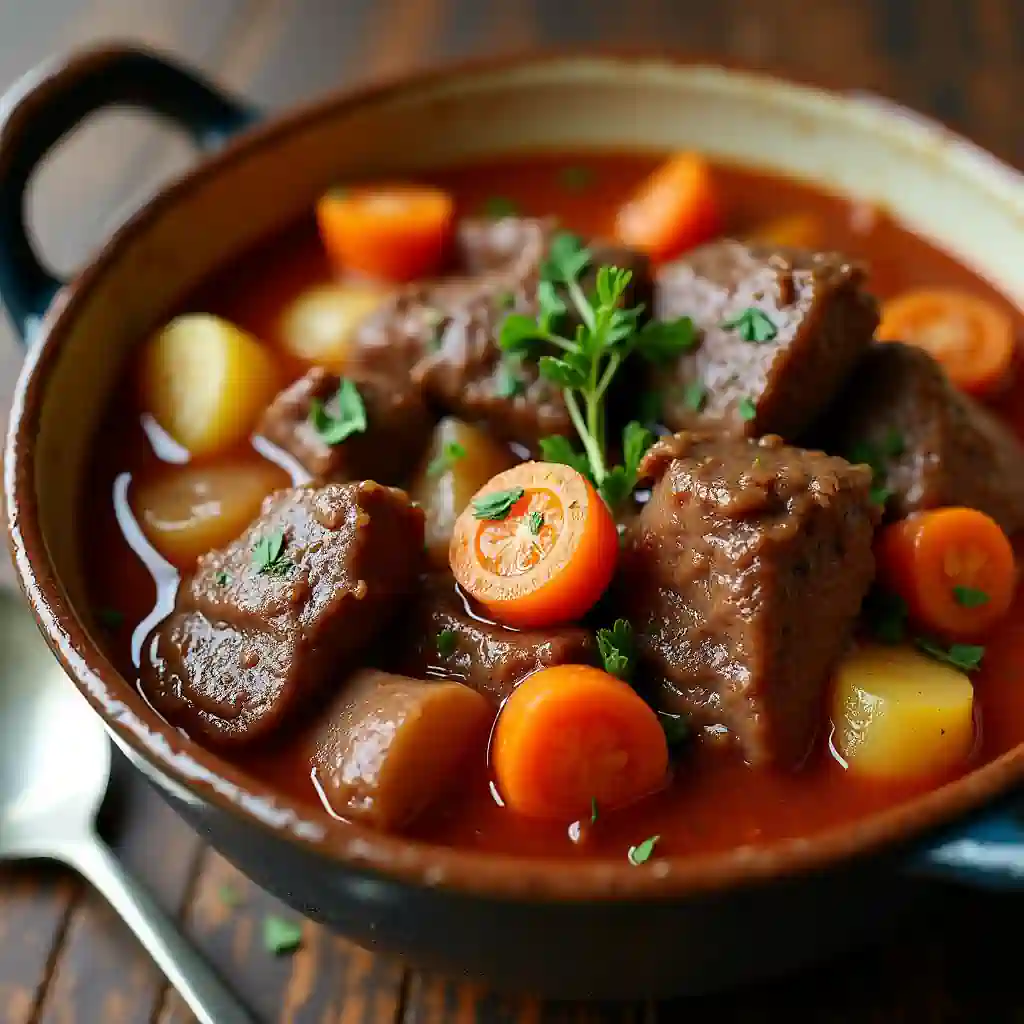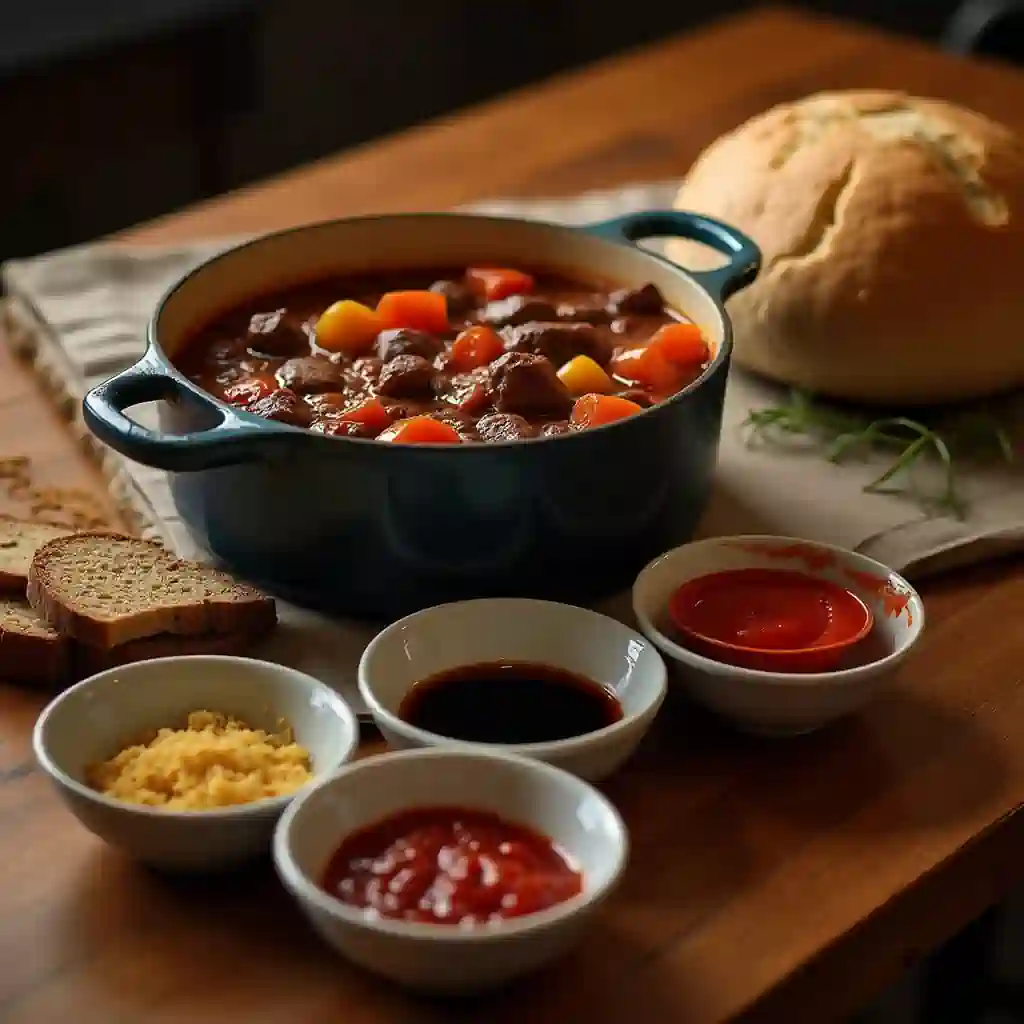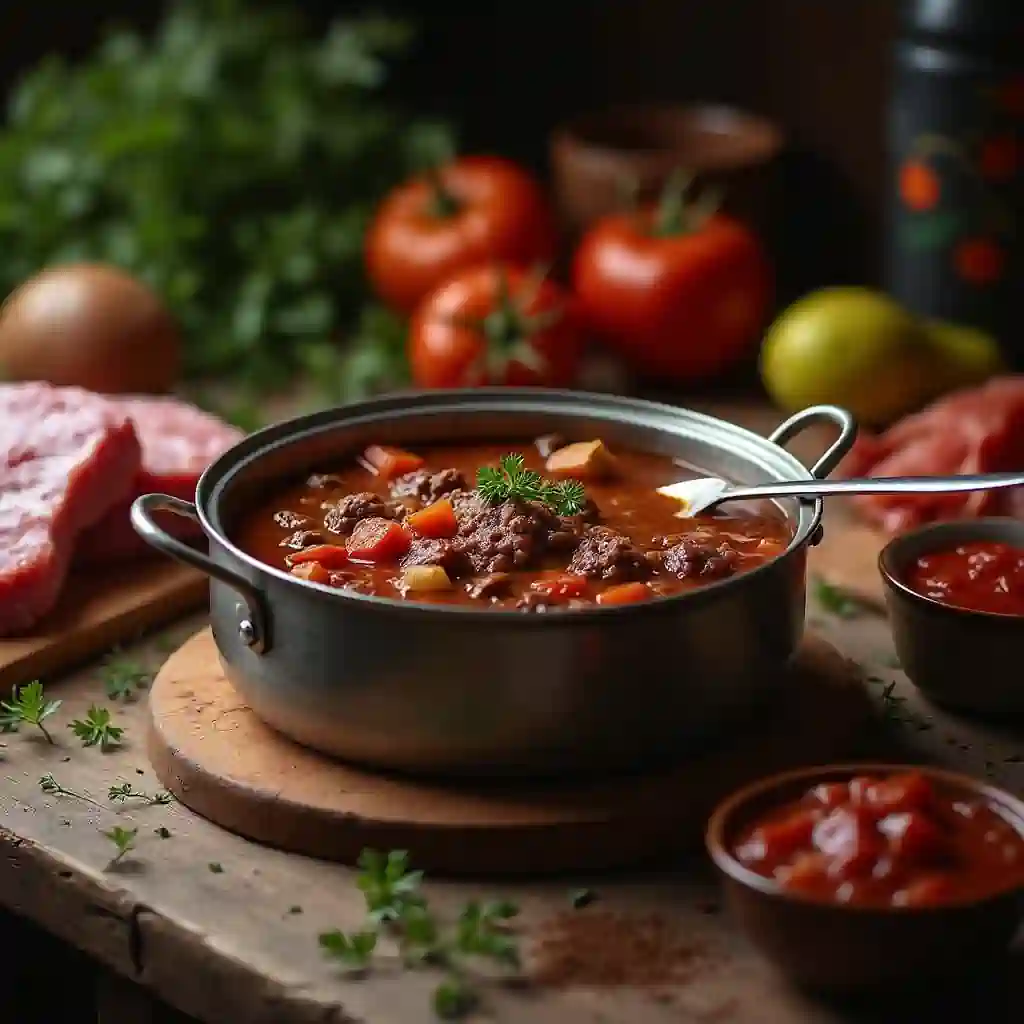Beef stew is the ultimate comfort food—warm, hearty, and packed with flavor. But have you ever wondered why so many recipes call for tomato paste? This humble ingredient might seem small, but it plays a big role in making your stew rich, flavorful, and downright irresistible. In this article, we’ll explore why put tomato paste in beef stew, how it enhances flavor, and what happens if you skip it. Whether you’re a seasoned cook or just starting out, you’ll walk away with tips to make your stews unforgettable. Let’s dive in!
Table of Contents
The Role of Tomato Paste in Beef Stew
What Does Tomato Paste Do to Stew?
Tomato paste is like a flavor bomb in your beef stew. It adds depth, richness, and umami—the savory “fifth taste” that makes food irresistible. Unlike fresh tomatoes or tomato sauce, tomato paste is concentrated, meaning a little goes a long way. Just a tablespoon or two can transform your stew from good to great.
“Tomato paste is the secret ingredient that turns a simple stew into a flavor-packed masterpiece.”
But it’s not just about flavor. Tomato paste also enhances the color and thickness of your stew. It gives the broth a rich, reddish-brown hue and helps thicken it slightly, making it more satisfying.
Why Tomato Paste Is a Game-Changer
So, why put tomato paste in beef stew? The answer lies in its versatility. It balances the richness of the beef, adds a touch of acidity, and complements other ingredients like carrots, potatoes, and herbs. Plus, it’s a pantry staple, so you likely already have it on hand.
Think of tomato paste as the secret weapon in your stew-making arsenal. It’s the ingredient that ties everything together, creating a dish that’s greater than the sum of its parts.
The Science Behind Tomato Paste in Stew
How Tomato Paste Enhances Flavor
Tomato paste isn’t just a flavor booster—it’s a science experiment in your pot! The secret lies in its high concentration of glutamates, natural compounds that create umami, the savory fifth taste. When you add tomato paste to your beef stew, it deepens the flavor profile, making every bite more satisfying.
“Tomato paste is like a flavor scientist—it unlocks the hidden potential of your stew.”
Additionally, when you brown tomato paste in the pot before adding liquids, it undergoes caramelization. This process creates even more complex flavors, adding a subtle sweetness and richness to the stew. It’s like turning up the volume on your dish’s flavor!
Tomato Paste vs. Other Tomato Products
You might wonder, why put tomato paste in beef stew instead of tomato sauce or diced tomatoes? The answer is simple: concentration. Tomato paste is made by cooking down tomatoes for hours, removing most of the water content. This leaves behind a thick, intense paste that packs a punch.
In contrast, tomato sauce and diced tomatoes are more diluted, so they don’t provide the same depth of flavor. While they can work in a pinch, tomato paste is the clear winner for creating a rich, flavorful stew.
How to Use Tomato Paste in Beef Stew
When and How to Add Tomato Paste
Timing is everything when it comes to tomato paste. For the best results, add it early in the cooking process. Start by sautéing it with your onions, garlic, and other aromatics. This step allows the paste to caramelize, unlocking its full flavor potential.
“A little caramelization goes a long way—browning tomato paste is the key to a richer stew.”
If you’re using a slow cooker or Instant Pot, you can still brown the tomato paste in a separate pan before adding it to the pot. This extra step is worth the effort for the depth of flavor it adds.
How Much Tomato Paste to Use
The amount of tomato paste you use depends on the size of your stew and your personal taste. As a general rule, 1-2 tablespoons per pound of meat is a good starting point. If you’re making a large batch, you can increase the amount, but be careful not to overdo it—tomato paste is potent!
For a lighter flavor, you can mix the tomato paste with a bit of broth before adding it to the stew. This helps distribute the flavor evenly without overwhelming the dish.
What If You Forget Tomato Paste in Beef Stew?
Can You Skip Tomato Paste?

So, why put tomato paste in beef stew if you can technically skip it? While you can make stew without tomato paste, the results won’t be the same. Without it, your stew might lack depth, richness, and that signature umami flavor. The broth could also look lighter and less appetizing.
“Skipping tomato paste? Your stew might lose its soul—but there’s a fix!”
If you’ve already started cooking and realize you’re out of tomato paste, don’t panic. There are ways to compensate and still create a delicious stew.
Substitutes for Tomato Paste
If you don’t have tomato paste on hand, you can use other tomato-based products. For example, tomato sauce or ketchup can work in a pinch, though they’re less concentrated. Start with a small amount and adjust to taste.
Alternatively, you can add umami-rich ingredients like soy sauce, Worcestershire sauce, or even a splash of balsamic vinegar. These won’t replicate the exact flavor of tomato paste, but they’ll add depth and complexity to your stew.
For more tips on enhancing flavor in your stew, check out our guide on What Can I Add to Beef Stew for Flavour?.
Part 5: Tips for Making the Best Beef Stew (300 words)

The Secret Ingredient in a Stew
Tomato paste is often called the secret ingredient in beef stew, and for good reason. It adds a layer of flavor that’s hard to replicate with other ingredients. But it’s not the only trick up your sleeve.
“Tomato paste is the MVP, but a great stew is a team effort.”
Other flavor boosters include fresh herbs like thyme and rosemary, aromatics like garlic and onions, and spices like paprika or bay leaves. Together, these ingredients create a stew that’s rich, flavorful, and unforgettable.
How to Make Beef Stew More Flavorful
If you’re looking to take your stew to the next level, try these tips:
- Brown the meat first. This step adds depth and richness to the stew.
- Layer your flavors. Sauté aromatics, caramelize tomato paste, and deglaze the pan with broth or wine.
- Balance the flavors. Add a touch of acidity (like vinegar or wine) and sweetness (like carrots) to round out the dish.
For more inspiration, check out our Hawaiian Beef Stew Recipe, which uses tomato paste to create a unique, tropical twist on the classic dish.
Part 6: FAQs About Tomato Paste in Beef Stew (500 words)
What Does Tomato Paste Do to Stew?
Tomato paste is like a flavor superhero in your beef stew. It adds depth, richness, and umami—the savory “fifth taste” that makes food irresistible. When you add tomato paste to your stew, it enhances the overall flavor profile, making every bite more satisfying.
But it’s not just about taste. Tomato paste also improves the texture and appearance of your stew. It thickens the broth slightly, giving it a richer, more luxurious feel. Plus, it adds a beautiful reddish-brown color that makes your stew look as good as it tastes.
“Tomato paste is the secret ingredient that turns a simple stew into a flavor-packed masterpiece.”
What If I Forgot Tomato Paste in Beef Stew?
If you forget to add tomato paste, don’t worry—your stew will still be edible, but it might lack the depth and richness that tomato paste provides. The broth could taste lighter, and the overall flavor might feel one-dimensional.
But here’s the good news: there are ways to fix it! You can use substitutes like tomato sauce, ketchup, or even sun-dried tomatoes. These won’t be as concentrated as tomato paste, so you’ll need to adjust the quantity. Start with a small amount and taste as you go.
Alternatively, you can add umami-rich ingredients like soy sauce, Worcestershire sauce, or a splash of balsamic vinegar. These won’t replicate the exact flavor of tomato paste, but they’ll add complexity and depth to your stew.
What Is the Secret Ingredient in a Stew?
Tomato paste is often called the secret ingredient in beef stew, and for good reason. It’s the key to creating a rich, flavorful broth that ties all the ingredients together.
But tomato paste isn’t the only secret weapon in your kitchen. Other ingredients that can elevate your stew include:
- Fresh herbs like thyme, rosemary, and bay leaves.
- Aromatics like garlic, onions, and celery.
- Spices like paprika, black pepper, and a pinch of cayenne for heat.
Together, these ingredients create a stew that’s greater than the sum of its parts.
What Can I Add to My Beef Stew to Make It More Flavorful?
If you’re looking to take your beef stew to the next level, here are some tips:
- Brown the meat first. This step adds depth and richness to the stew.
- Caramelize the tomato paste. Sauté it with your aromatics to unlock its full flavor potential.
- Layer your flavors. Add ingredients in stages, starting with aromatics, then meat, then liquids.
- Balance the flavors. Add a touch of acidity (like vinegar or wine) and sweetness (like carrots) to round out the dish.
For more inspiration, check out our guide on What Happens If You Don’t Brown Meat for Stew?
Part 7: Conclusion – Mastering Beef Stew with Tomato Paste (200 words)
Embracing the Power of Tomato Paste
So, why put tomato paste in beef stew? The answer is simple: it’s a flavor powerhouse. From adding umami to enhancing the color and thickness of your stew, tomato paste is a game-changer.
“Tomato paste isn’t just an ingredient—it’s the heart of a great stew.”
The Joy of Cooking with Confidence
Now that you know the science and secrets behind tomato paste, you can cook with confidence. Whether you’re making a classic beef stew or experimenting with new flavors, tomato paste will help you create a dish that’s rich, flavorful, and unforgettable.
Final Thoughts
At the end of the day, cooking is all about creativity and joy. So, grab that can of tomato paste, fire up the stove, and get ready to make the best beef stew of your life. Happy cooking!

